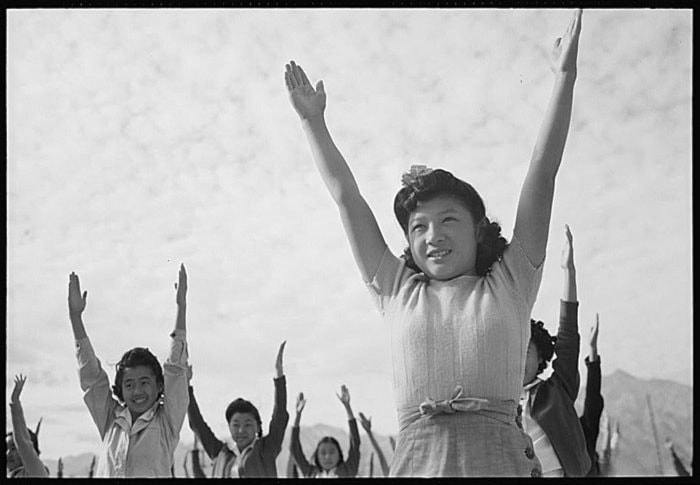Touchstones Nelson will celebrate the opening of two exhibitions on Friday night: Two Views: Photographs by Ansel Adams and Leonard Frank and The White Line: Wood Engraving Prints from the Studio and Collection of Gene Leavitt. Everyone is welcome to the opening reception, taking place from 7 to 9 p.m.
Two Views: Photographs by Ansel Adams and Leonard Frank is a compelling collection of photographs that presents two views of internment and incarceration in the early 1940s. Leonard Frank’s photographs include images from internment camps in New Denver, Kaslo, Sandon, Tashme and Vancouver, while Ansel Adam’s photographs depict the Manzanar Relocation Centre in California. This exhibition is on loan from the Japanese Canadian National Museum. The exhibition will also feature short documentary films by students from Lucerne Secondary School and professional filmmakers Moira Simpson and Catrina Megumi Longmuir.
This exhibition provides an opportunity to reflect on the nature of forced separation and uprooting and the effects that it has on its victims. After the bombing of Pearl Harbor in 1941, both the Canadian and American governments forced the relocation of citizens of Japanese descent from the coastal regions. Nearly 120,000 Japanese Americans and 22,000 Japanese Canadians were affected. The internment camps for the Japanese Americans were scattered around the US west. In Canada, the BC Security Commission was established to oversee the removal to hastily planned camps in the BC Interior, or to work and road camps in other parts of the country.
Local artist and teacher Gene Leavitt has long been interested in creating and collecting relief and wood engraving prints. The White Line will feature prints from his impressive personal collection, as well as those he has created himself. It promises to be an exciting opportunity to gain insight into this process, and see the amazing range of style and expression that is possible within its boundaries.
In contrast to much of the digital imagery that surrounds us today, the relief printmaking process of wood engraving is typically a low-tech, high-precision endeavour. Invented in the 18th century, primarily for book illustration, wood engraving is a refinement of the ancient relief technique of the woodcut resulting in a far richer tonal range and greater detail.
